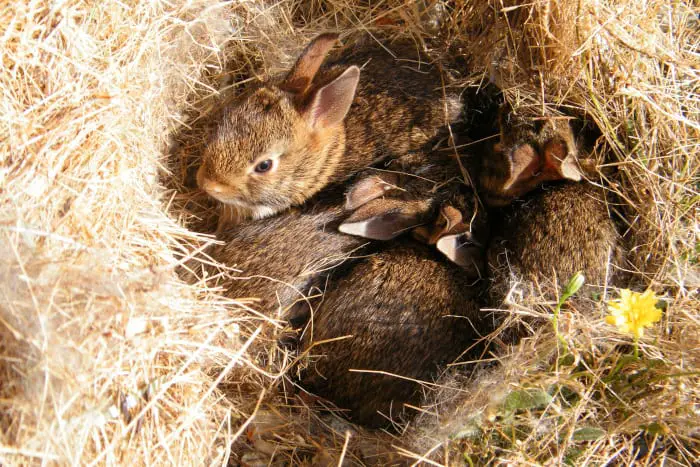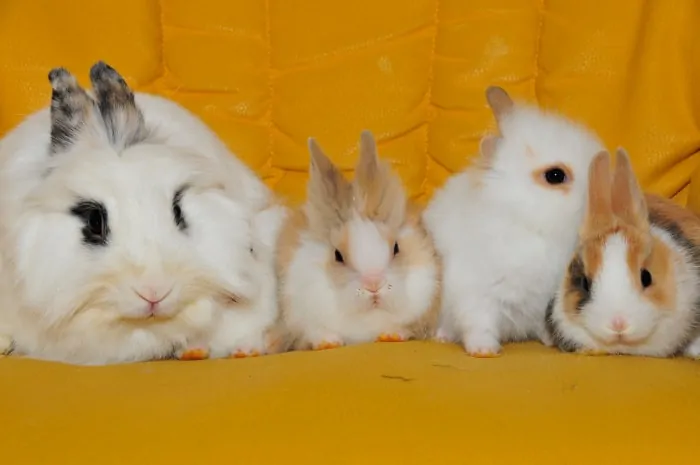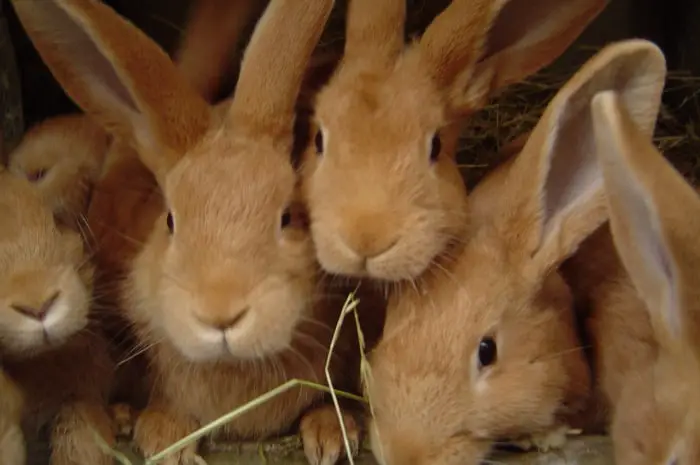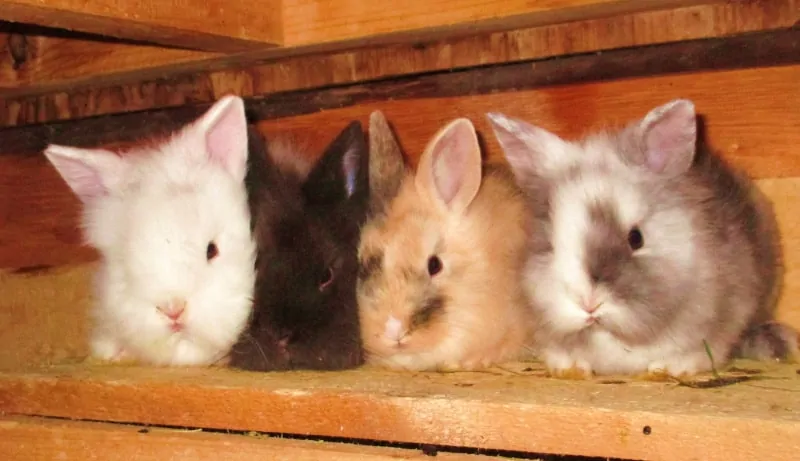If you are a pet owner with a male and female pair of rabbits, you must be wondering how many babies rabbits can have, and you will certainly want to be prepared. If you are considering breeding rabbits, you have come to the right place. There are many factors that need to be considered if you are okay with your pet rabbit having babies. Here we will try to answer any questions you may have regarding the breeding process of pet rabbits.
How long is a rabbit pregnancy?
So, the reason that we will mention the length of a rabbit’s pregnancy is pretty much to let you know how soon you can have baby rabbits roaming around. The gestation period is roughly 31 days. So that’s a month. However, there are slight variations in the length of pregnancies depending on the type of rabbit you have. You can take a look at some of the variations here.
- English & French Lops- Their gestation period is anywhere between 28 to 31 days
- European rabbits- Your baby rabbits may take a little longer to get here. The gestation period is 28- 35 days.
How many babies can a rabbit have in the first litter?
As a responsible pet owner or buddying rabbit breeder, you need to prepared for how many babies your female pet rabbit can have at one time. If its the first time she’s having kits, you can expect anywhere between 1 and 14 baby rabbits. An average litter is maybe 6-7 baby bunnies.

What factors can affect the size of a litter?
The size of a litter is important to any pet rabbit breeder. Most breeders try for at least 12 kits in a litter. There are certain factors that have a direct impact on how many babies your doe can have per pregnancy and they will be explored in-depth here.
- Nutrition – How many babies your pet rabbit has is dependent on what you are feeding her. Remember, your pregnant pet rabbit is growing those babies from scratch. So she needs adequate nutrients so that she can sustain a large litter of kits.
- Protein – During pregnancy, protein should make up at least 15% of her diet. While we know that hay should make up 80% of a pet rabbit’s diet to ensure digestive efficiency, the protein can come from vegetables and pellets. If you opt to introduce this supplement. However, let us explore some of the vegetables, that could get your pregnant pet bunny the protein he needs
- Watercress – This is a safe vegetable that rabbits can have. One cup of this leafy green vegetable contains about 0.8 grams of protein.
- Alfalfa Sprouts – Another good source of protein for your pregnant rabbit. 1 cup contains 1.3 grams of protein. There are also a decent amount of vitamins and minerals in Alfalfa sprouts like folate, iron, magnesium, phosphorus vitamin K, and C. All can assist with the health group of baby rabbits.
- Spinach – Also a great source of protein. Pet rabbits really enjoy the green leaves. There are 0.3 grams of protein in 1 cup.
- Mustard greens – There are 1.5 grams of protein in a cup of chopped mustard greens.
- Collard greens – Also a bunny approved green leafy vegetable. 1 cup contains 0.9 grams of protein.
- Cauliflower – Entire vegetable is safe for your pregnant pet rabbit. She can eat the stalk, leaves, and florets. 1 cup contains roughly 2 grams of protein.
Your rabbit does not need a lot of these vegetables. However, adding the vegetables from this list will ensure your pregnant pet rabbit gets the protein she needs for strong young kits.
Your pregnant pet rabbit also needs fats in her diet to sustain a large litter of babies. A regulated amount can be introduced via pellets. Pellets are specially formulated to meet the dietary needs of rabbits. They are made from hay. However, the nutrients that your rabbit needs for a balanced diet are added. You should consider rationing pellets though since rabbits usually like them and then stop eating their hay.
- Hereditary factor – The size of a litter may also be determined by the actual bunnies that are being mated. If they came from parents who had large litters, this may be passed down to them.
- Extended mating time – This one is just a theory based on the concept that the more mating time that the bunnies are allowed, the more likely there will be more fertilized eggs. Again, there is no substantial proof that there is any co-relation.

What is the survival rate of rabbits in a litter?
A first-time mom’s litter may not have a very good survival rate. A new rabbit mom may have very little interest in her new babies. She may fail to feed them and keep them warm. There have been instances where new rabbit moms have eaten their young. I know it sounds horrific. However, this is rare since rabbits are not carnivorous creatures. She will only do this if she is terribly anxious, she is lacking protein in her diet or feels territorial.
Naturally, seasoned moms will take better care of their young kits. However, kits remained at risk for the first 8 weeks of their life. From 3 months onward, they are pretty much in the clear.
Age, breeds and litter size
If the doe is very young, her embryos may not mature properly. She may also have some stillborns in her litter. This is linked to her reproductive system being immature and not being able to cope with the rigors of pregnancy.
There is also some variation in the survival rate of rabbits depending on their breed. Purebred rabbits have a higher mortality rate than mixed breed rabbits. This is unfortunate but you should remember this to correctly set your expectations if you are the owner of purebreds.
Larger litters, unfortunately, have a tendency to have high mortalities rates. This is so for a number of reasons. In a large litter, there may be competition among the kits at nursing time. Also, remember babies from a large litter may have lower birth weights which can work against them in the survival rate.
How fast can a rabbit reproduce?
Well, we already know that a rabbit pregnancy lasts for 31 days on average. How soon after can a female ger pregnant? The answer is almost immediately. Female rabbits are induced ovulators. This means that they produce an egg due to intercourse. They do not have a mating season and are not confined by a menstrual cycle. Bunnies are pretty much always ready to go.
How many babies can a pet rabbit have in a year?
The saying “breed like rabbits” is backed by solid facts. If rabbits pregnancies last a month and they are pretty much ready to go soon thereafter. There is great potential for offspring. The largest litter on record is 24, this has only ever happened twice. However, most of the time large litters carry 14 kits. If she has a litter of this size every month for a year, that would mean 168 baby rabbits in a year.
If one female can have so many babies in one year, you can see why it makes sense that you spay or neuter your rabbits regularly. Some countries have to regularly control their rabbit population, and one of the most famous examples is that of Australia in the 1920s.

How many baby rabbits can your pet rabbit have in her lifetime?
A female rabbit can have as much as 1000 babies during the course of her life if she is always around a potential mate. That’s an impressive number of babies and a good reason for you to take mating seriously.
What can I do to prepare for and help take care of a litter of baby rabbits?
Rabbits pretty much can take care of their young unassisted. However, the following guidelines are useful if you have the chance to observe the birth:
- You can provide a nesting box for them to give birth.
- You should keep her supplied with fresh water and hay.
- As a responsible pet owner, you should try to make her as comfortable as possible.
- You should remove any stillborns from the nest. However, do not remove any placenta. Your rabbit needs to eat this to trigger feeding hormones. If you notice that any of the kits look undernourished you can intervene and feed them with Kitten Milk Replacer or goat milk.
- You can use a syringe for feeding. However, never push the syringe to allow the kit to suckle the syringe.
- If you notice that your pet rabbit is having issues with lactation, you should take her to the veterinarian immediately. Your vet will probably address this problem with an oxytocin shot. If all goes well, you will be able to nurture most of your baby rabbits, ensuring their survival.
So by now, you understand that your pet rabbit can have quite a few babies. They reproduce quickly and litter sizes may vary from 1-14 kits. There are a few factors that can affect litter sizes like nutrition, breed, mating duration, and inherited traits. The good news is that you can support the birthing process and help your pet rabbit save as many of her kits as possible.

